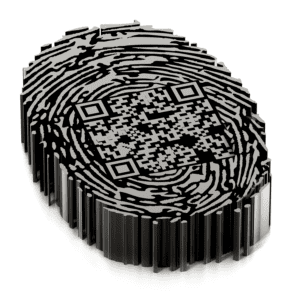Is Your Forensic LIMS Ready to Adapt to New Technology Trends?

By: Chris Casper | April 4, 2022
Technological innovations are transforming forensic science, letting labs produce more objective, science-based analyses of evidence. However, a report from the National Institute of Justice (NIJ) found that improving forensic capabilities stimulates more demand from requesting agencies. This growing demand is driving case backlogs at forensic laboratories across the country.
Labs also face rising demand caused by their own process improvement efforts. Each percent improvement in DNA analysis turnaround times, the NIJ study found, led to an increase in case submissions and the number of items submitted per case of 1.29% and 3.9% respectively. Forensic labs need more than incremental efficiency improvements to keep pace with the demand new forensic technologies will create.
In this article, we will review several emerging technologies that will enhance forensic laboratories in the coming years. However, forensic labs will need to adopt more efficient processes to make the most of these innovations. This is where a laboratory information management system (LIMS) optimized for forensics labs can help free time and resources to meet rising demand.
DNA sequencing for forensics
Since DNA evidence first contributed to a conviction in 1988, DNA profiling has become the gold standard for criminal prosecution. DNA evidence helps law enforcement identify the correct suspect, makes convictions easier and can exonerate the wrongly convicted.
Those benefits explain why the NIJ found an increase in forensic DNA requests of 21.9% over a five-year period. Labs are already at capacity meeting demand for current cases. Yet the number of requests to support older investigations is also growing.
Cold cases and DNA profiling
Forensic labs, police departments and prosecutor offices across the country are still working through inventories of untested sexual assault kits (SAKs). When NIJ-funded teams in Houston and Detroit inventoried SAKs in police storage facilities, they found more than 27,000 unsubmitted SAKs. No current nationwide estimates exist, but sites funded by the National Sexual Assault Kit Initiative (SAKI) inventoried more than 146,000 SAKs over a seven-year period. The scope of the challenge is even larger than those numbers indicate as each SAK may contain a dozen or more discrete samples.
Cold cases also contribute to rising requests for DNA profiling. Evidence collected before modern forensic DNA analysis was in wide use can help bring closure to families and victims long after the initial investigation ended. In 2012, a Cascade County Sheriff’s Office detective was handed an unsolved double-homicide case from 1956. Samples collected during the victims’ autopsies still held enough DNA evidence to identify the killer.
Around the same time, Cook County Sheriff’s Office Detective Lieutenant Jason Moran re-opened one of the most notorious cold cases. Eight of serial killer John Wayne Gacy’s victims were never identified. Writing for the NIJ’s “Notes from the Field”, Moran said that thanks to DNA sequencing,
“Over the past 10 years, we’ve been able to identify three of the eight unidentified Gacy victims, and as of November 2021, we believe we are close to identifying others. Additionally, as a result of re-opening the Gacy case, we’ve been able to close 11 other cold cases involving missing persons that fit the profile of a Gacy victim.”
Next-Generation Sequencing and beyond
Although traditional DNA sequencing techniques revolutionized criminal justice, they suffer from certain limitations. Low sensitivity prevents these first-generation DNA sequencers from handling:
- Trace samples
- Samples containing DNA from multiple people
- Samples containing degraded DNA.
Scalability is also an issue as first-generation instruments can only sequence one DNA strand at a time.
Introduced in the early 2000s, Next-Generation Sequencing (NGS) instruments can process multiple samples in parallel to support higher-throughput operations. NGS systems have the sensitivity to sequence small, complex or degraded samples. Latent fingerprints, for example, contain enough genetic material for NGS instruments to recover a partial DNA profile 90% of the time.
Another benefit of NGS instruments is their ability to sequence many more targets, allowing forensic labs to make inferences about an unknown suspect’s physical characteristics and ancestry.
Forensic sequencing is not limited to the DNA of suspects and victims. Every person’s skin biome — the community of bacteria, fungi and other microbes living on our bodies — is unique. NGS systems can map microbial “fingerprints” on crime scene evidence to identify suspects. Researchers recently achieved a 94% success rate which rose to 100% when samples were collected from human hands.
Forensic mass spectrometry
Advances in mass spectrometry (MS) also contribute to the rising demand for forensic analysis. Gas chromatography-mass spectrometry (GC-MS) and, increasingly, liquid chromatography-mass spectrometry (LC-MS) are considered “gold standards” in forensic analysis. Thoroughly validated and defended under cross-examination, GC-MS and LC-MS analysis provide objective identification of fire and explosive residues, materials evidence, drugs and drug metabolites.
Forensic laboratories have used GC-MS since the early 1970s, and it remains one of the most commonly used MS techniques. Gas chromatography, however, works best with compounds that are volatile, polar and have low molecular weights. Many drugs — especially cannabinoids, opiates and other new psychoactive substances — are non-polar and less volatile. When labs use GC-MS to analyze these substances, they must derivatize samples to increase their volatility. This extra step in sample preparation raises costs and increases turnaround times.
LC-MS techniques, on the other hand, are better suited for non-polar and less volatile substances. Forensic analysis of these substances using LC-MS can achieve higher resolution and higher sensitivity without the need for derivatization. With better performance and faster turnaround times, LC-MS techniques are being used more widely in forensic labs.
Emerging MS techniques
Manufacturers have steadily improved the speed and sensitivity of mass spectrometry instruments. Forensic applications of new MS technologies could offer step-changes in performance and usability.
Ambient ionization MS technologies such as Direct Analysis in Real Time (DART) are already in use at federal and state forensic labs. For example, the Mass Spectrometry Data Center at the National Institute of Standards and Technology (NIST) is compiling a library of DART-generated spectra that forensic labs can use as references in their analyses.
Simpler, faster and more affordable, ambient ionization MS has let researchers explore novel forensic applications. Forensic entomology, for example, requires expert analysis of blowfly larvae to estimate time of death. This analysis requires time for the larvae to develop and reduce the subjectivity of species identification. Automating this process through DNA sequencing is not practical as blowfly genomes are not well documented. In one study, combinations of six blowfly species underwent DART-high resolution mass spectrometric (HRMS) analysis. Applying machine learning to the resulting molecular information produced a predictive algorithm that distinguished between the six species with 80-99% confidence limits. With further development and validation, MS techniques such as this could significantly reduce turnaround times while possibly improving the objectivity of forensic evidence.
Forensic 3D technologies
With the development of imaging technologies, forensic labs are adopting digital 3D imaging, modeling and printing. These techniques help document crime scenes while supporting more accurate and objective forensic analysis.
Analyzing shoe and tire prints, for example, is easier with 3D technology. Traditional photography and cast impressions require time, skill and resources to provide forensically useful evidence. With little specialized training, crime scene investigators can take 3D scans of a shoe or tire print in seconds. The resulting 3D model is more detailed and accurate than 2D records. Laboratory staff can analyze the virtual model as if they were at the crime scene — or even use a 3D printer to create a physical model.
At a smaller scale, 3D imaging could restore confidence in bullet toolmark analysis. Courts began to limit bullet evidence and expert testimony after the National Academy of Science expressed concerns that traditional 2D imaging techniques have solid scientific support. Using high-resolution 3D scanning to measure toolmarks could provide more accurate measurements, make comparisons more objective, and allow virtual independent reviews. To support NIST’s forensic method development and validation efforts, the agency’s Ballistics Toolmark Research Database collects 3D bullet and cartridge case toolmark data.
Meet technology-driven demand with a forensic LIMS
These and other technologies will let forensic labs offer new and better forensic analyses to their customers. Of course, we have already seen how offering better service leads to more demand. Without the capacity to handle this demand, forensic labs could face rising backlogs. Larger budgets would help, but forensic labs have more control over their internal productivity.
This is where forensic LIMS software can help. Features such as instrument integration and automation let laboratories eliminate the manual processes that undermine productivity. Furthermore, the capabilities of a cloud-native forensic LIMS let laboratories apply lessons learned during the pandemic to create a more efficient workforce.
Forensic LIMS instrument integration
In its report to Congress, NIJ found that, while most forensic labs had a LIMS, three out of four labs did not integrate their instruments with their forensic LIMS software. As a result, these labs cannot take advantage of the productivity benefits instrument integration offers.
Manually loading setup files for each run and then transferring data from the instrument to analysis applications are low-value uses of lab personnel’s time. Integrating instruments with a forensic LIMS eliminates this wasted time. Files are transferred directly between the LIMS and the instrument, freeing lab personnel to focus on higher-value tasks.
LIMS-instrument integrations also eliminate many sources of error that manual data transfers create. For example, every instrument vendor formats data differently — sometimes from instrument to instrument. Manual transfers can easily introduce conversion and transcription errors into the subsequent analysis. LIMS integrations automatically normalize data passing between the instrument and the LIMS database.
Forensic lab automation
When labs combine instrument integration with robotic systems, they can use their forensic LIMS software to automate entire testing processes. LIMS-controlled automation lets forensic labs adopt the high-throughput processes needed to increase capacity and reduce turnaround times.
Reproducibility and quality control are other benefits of LIMS-supported automation. Taking the human out of the loop ensures that every step in a process is performed the same way every time. Instruments and robotic systems can reference sample information in the LIMS to check for errors before each run.
Workforce productivity
Workplace practices often evolve with little evaluation. Everything changed, however, when COVID-19 workplace restrictions went into effect. Protecting staff without disrupting lab operations required new ways of working. When the Forensic Technology Center of Excellence (FTCoE) looked at forensic labs’ responses to the pandemic, it drew lessons that could make labs more productive post-pandemic.
Hybrid workforces
Before 2020, management culture across industries equated attendance with productivity. Pandemic workplace restrictions forced organizations to reconsider this outdated attitude. When in the lab, FTCoE’s report found, staff could focus on sample prep and analysis. This, in turn, improved instrument availability. By the same token, staff working at home could focus on their reports without the typical workplace distractions.
Digital review processes
Shifting to a hybrid workforce model also forced forensic labs to modernize their quality review processes. Forensic LIMS software helped labs migrate from paper reports to digital reports that streamlined reviews. Features such as notifications and automatic routing accelerated the review process.
Cloud-based access
Labs using cloud-based forensic LIMS software could support their new work-from-home practices without large technology investments. Installing dedicated applications or upgrading their network infrastructure was not necessary. Browser interfaces let laboratory staff access their LIMS from lab-issued or personal devices.
Improve lab efficiency and capacity with ELab LIMS for Forensics
ELab LIMS for Forensics comes pre-configured with the features and capabilities forensic labs need to handle the growing demand for their services. Improve your lab’s productivity by using ELab LIMS to standardize workflows, integrate instrumentation, automate processes and eliminate time-wasting manual tasks.
Built on LabLynx’s secure cloud platform, ELab LIMS provides anywhere, anytime access to support hybrid workforces while enforcing role-based access control rules to protect your lab’s data integrity.
Contact LabLynx today to learn more about how ELab LIMS for Forensics can help reduce turnaround times and meet the growing demand for forensic analysis.
















